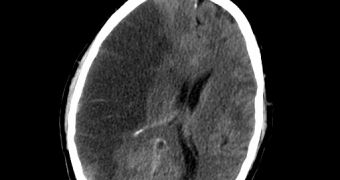A new drug therapy could improve the lives of people having suffered a stroke or a head injury, by restoring the mobility of paralyzed arms and legs by up to half, found two University of Otago and UCLA researchers, that have been carrying out a study on the matter for the past two and a half years.
They have been working on drug compounds that are believed to enhance cognition, but the extrasynaptic GABA inverse agonists compounds are also known to affect the kidneys, so the research is not over yet.
Today, stroke victims can benefit from a therapy called transcranial magnetic simulation and from remedial therapies, in order to try to recover from paralysis.
The issue is that this type of therapy only helps restore 10-15 percent of mobility in humans, so researchers have high expectations concerning this new compound.
For the first study of its kind, Dr. Andrew Clarkson, an University of Otago research fellow from the Department of Psychology, Anatomy and Structural Biology, and his colleagues, used a slow-release pump implanted under the skin of mice to administer the compound over a six week period.
What they found was that the neurons in the brain that were responsible for limb function, would wake up from the dormant state they were in after the stroke.
The treatment in mice began three days after the event, which in human terms is equal to three weeks, the waiting period being necessary precisely so that the stroke site could enter the dormant state.
After six weeks of treatment, the researchers noticed a dramatic improvement of limb mobility, the mice that received the compound actually regaining up to 50 percent of overall motor limb capacity.
This improvement was in addition to the 10-15% gain in motor skills that normally occur in mice which are not treated with the drug compound.
Dr. Clarkson says that “when the compound is given, the dormant neurons fire up again and that leads to telling your limbs to work.
“At the moment we know this works on gross motor skills, and whether the compound would also lead to greater use of fine motor skills associated with speech, for example, we will hopefully know within the next two years after further research.
“This also provides hope for those with traumatic head injuries – the brain mechanisms of repair are similar so there is potential for this to work for them too.”
When all problems related to the compound will be solved and if the test on humans will be a success, people who suffer from ischemic stroke will be able to hope for a better life.
Dr. Clarkson worked with Dr. S. Thomas Carmichael from the Department of Neurology, UCLA, California.
These results have been published in Nature on-line.

 14 DAY TRIAL //
14 DAY TRIAL //